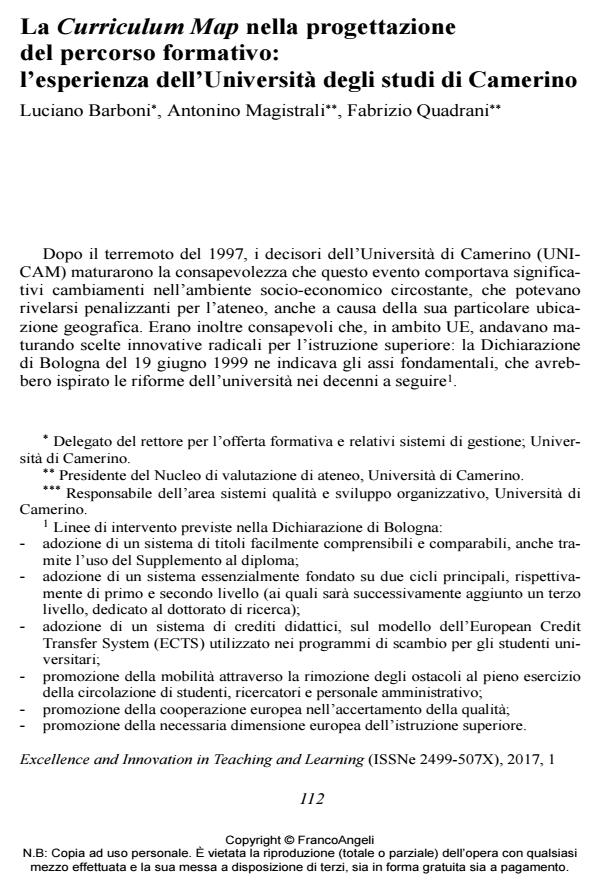The Curriculum Map in the Curriculum Design: The Experience of the University of Camerino
Journal title EXCELLENCE AND INNOVATION IN LEARNING AND TEACHING
Author/s Luciano Barboni, Antonino Magistrali, Fabrizio Quadrani
Publishing Year 2017 Issue 2017/1
Language Italian Pages 14 P. 112-125 File size 226 KB
DOI 10.3280/EXI2017-001007
DOI is like a bar code for intellectual property: to have more infomation
click here
Below, you can see the article first page
If you want to buy this article in PDF format, you can do it, following the instructions to buy download credits

FrancoAngeli is member of Publishers International Linking Association, Inc (PILA), a not-for-profit association which run the CrossRef service enabling links to and from online scholarly content.
The use of curriculum mapping at the University of Camerino is described. It shows how the Curriculum Map is a valuable tool in the curriculum design and the periodic checking of internal consistency.
Keywords: Curriculum design; curriculum map; learning objectives; learning outcomes; University of Camerino; ASDU
Luciano Barboni, Antonino Magistrali, Fabrizio Quadrani, La Curriculum Map nella progettazione del percorso formativo: l’esperienza dell’Università degli studi di Camerino in "EXCELLENCE AND INNOVATION IN LEARNING AND TEACHING" 1/2017, pp 112-125, DOI: 10.3280/EXI2017-001007